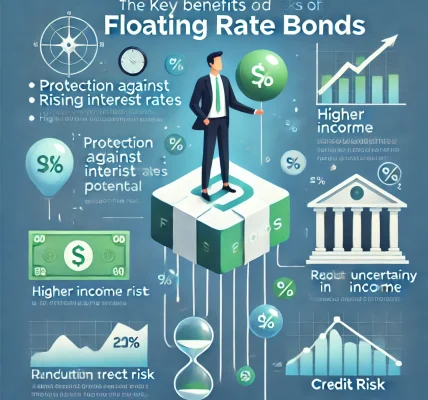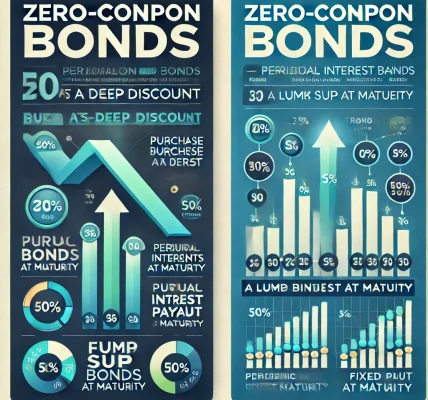Investing in bonds can be a great way to diversify your portfolio, generate steady income, and reduce risk compared to stocks. However, not all bonds are created equal, and evaluating a bond before investing is crucial to ensuring it aligns with your financial goals. In this guide, we will explore the key metrics and factors to consider when assessing bonds for investment.
1. Bond Ratings: Assessing Creditworthiness
Bond ratings, issued by agencies like Moody’s, S&P, and Fitch, provide insight into the creditworthiness of a bond issuer. Ratings typically range from AAA (highest quality) to D (defaulted bonds).
- Investment-grade bonds (AAA to BBB-) are considered lower risk.
- High-yield or junk bonds (BB+ and below) offer higher returns but come with greater risk.
- Issuer analysis: Government bonds are generally safer than corporate bonds, but checking the issuer’s financial health is vital.
Key Tip:
Look for bonds with a credit rating that matches your risk tolerance. If safety is a priority, stick to investment-grade bonds.
2. Yield to Maturity (YTM): Understanding Returns
Yield to Maturity (YTM) is a crucial measure that estimates the total return you will earn if you hold a bond until it matures, assuming all interest payments are reinvested.
- Higher YTM may indicate a riskier investment.
- Compare YTM across different bonds to determine which offers the best return for your risk appetite.
- Calculate tax impact: Some bonds, such as municipal bonds, may offer tax-free interest, which can affect after-tax yield.
Key Tip:
A bond with a high YTM may seem attractive, but always evaluate the underlying risk before investing.
3. Coupon Rate: Fixed vs. Floating Interest
The coupon rate is the annual interest payment a bondholder receives, expressed as a percentage of the bond’s face value.
- Fixed-rate bonds provide predictable income but may lose value if interest rates rise.
- Floating-rate bonds adjust periodically based on benchmark rates, offering some protection against rising interest rates.
- Zero-coupon bonds do not pay periodic interest but are sold at a discount and redeemed at face value upon maturity.
Key Tip:
If you need regular income, opt for bonds with a higher fixed coupon rate. If you anticipate rising interest rates, floating-rate bonds may be a better choice.
4. Duration and Interest Rate Sensitivity
Duration measures how sensitive a bond’s price is to changes in interest rates.
- Short-duration bonds (1-3 years) are less affected by rate fluctuations.
- Long-duration bonds (10+ years) offer higher yields but are more volatile.
- Modified duration quantifies the price change in response to a 1% interest rate shift.
Key Tip:
If you expect interest rates to rise, consider short-duration bonds to minimize price risk.
5. Liquidity: How Easily Can You Sell the Bond?
Liquidity refers to how easily a bond can be bought or sold in the market without significantly impacting its price.
- Government bonds tend to be highly liquid.
- Corporate bonds may have lower liquidity depending on the issuer.
- Bid-ask spreads: A large spread indicates lower liquidity and potential difficulty selling at a fair price.
Key Tip:
Check historical trading volumes and bid-ask spreads to gauge a bond’s liquidity before investing.
6. Call and Put Provisions: Special Features of Bonds
- Callable bonds: The issuer can redeem them before maturity, which can be risky for investors if interest rates fall.
- Putable bonds: Investors have the right to sell them back before maturity, offering flexibility.
- Convertible bonds: These can be converted into stock, blending features of both debt and equity investments.
Key Tip:
Understand a bond’s provisions before investing, as they can impact returns and risk levels.
7. Inflation Impact: Real Return Considerations
Inflation erodes the purchasing power of fixed-income returns.
- Inflation-linked bonds (like Treasury Inflation-Protected Securities or TIPS) adjust with inflation, providing real returns.
- Nominal bonds have fixed payments that lose value in high-inflation environments.
- Break-even inflation rate: The difference between nominal bond yields and inflation-protected bond yields can help gauge inflation expectations.
Key Tip:
If inflation is a concern, consider inflation-linked bonds for better purchasing power protection.
8. Tax Implications: Net Return After Taxes
Different bonds have different tax treatments.
- Municipal bonds: Interest is often tax-free at the federal level and sometimes at the state level.
- Corporate bonds: Interest income is fully taxable.
- Treasury bonds: Federal tax applies, but they are exempt from state and local taxes.
Key Tip:
Evaluate your tax bracket and investment goals to determine the most tax-efficient bond investment.
Final Thoughts: Making an Informed Bond Investment
Investing in bonds requires careful analysis of multiple factors. By understanding bond ratings, yields, interest rate sensitivity, liquidity, provisions, inflation impact, and tax considerations, you can make well-informed decisions that align with your financial goals.
Quick Checklist Before Investing in a Bond:
✅ Check the credit rating (AAA, BBB, etc.).
✅ Compare YTM across different bonds.
✅ Determine if the coupon rate meets your income needs.
✅ Assess the bond’s duration and interest rate risk.
✅ Evaluate the liquidity and marketability of the bond.
✅ Look at any call, put, or convertible features.
✅ Consider inflation protection options.
✅ Understand the tax treatment of the bond’s interest income.
By following these guidelines, you can select bonds that suit your investment strategy and risk tolerance. Happy investing!




